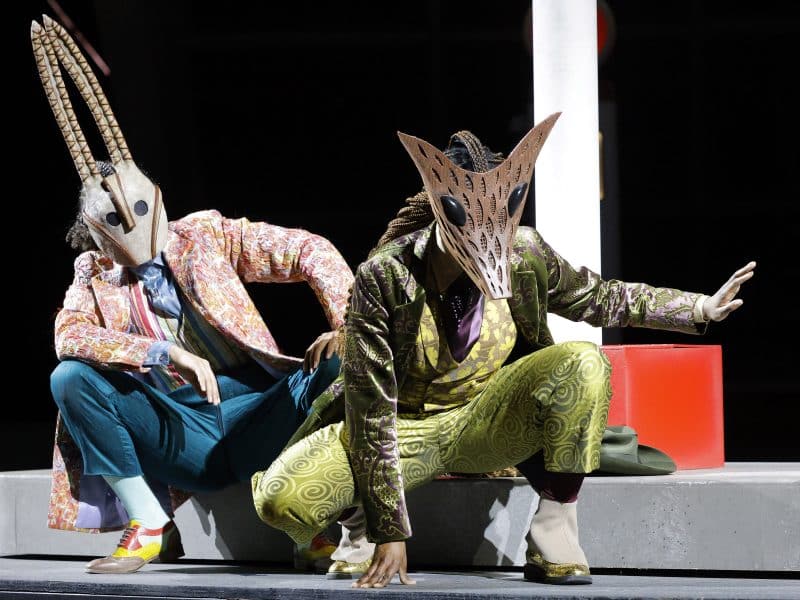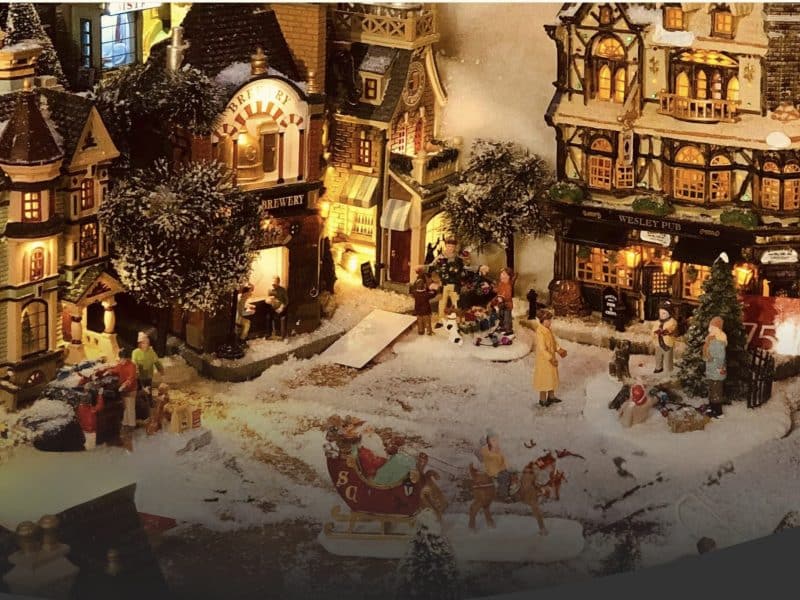Corrado Parducci, the great (and mostly forgotten) architectural artist of Detroit
Parducci was an Italian-American immigrant who came to Detroit via New York in 1925. An architectural sculptor, he would complete over 600 commissions in his 60-year career, many of them a part of Detroit's most iconic buildings.
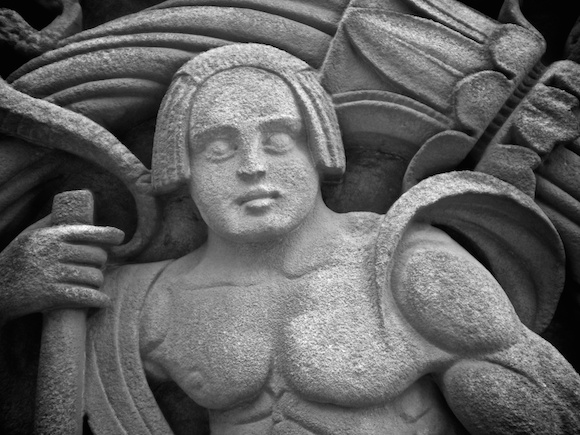
Ask enthusiasts what they love about Detroit architecture and they’ll likely mention the incredible ceilings, floors, and decorative fixtures that adorn the city’s 1920s- and 30s- era buildings — inside and out. What they might not realize, however, is that one man is responsible for a significant number of those features, particularly the sculptural reliefs you see on building exteriors and in grand skyscraper lobbies.
From the bas-reliefs of the Guardian Building to the Native American sculptural motifs of the greater Penobscot Building, no artist better defines Detroit’s downtown than Corrado Parducci.
Parducci was an Italian-American immigrant who came to Detroit via New York in 1925 to work for Albert Kahn on the Security Trust Company and First State Bank buildings. He went on to complete over 600 commissions in his 60-year career, most of them in and around the city of Detroit.
Never heard of him? If you’ve spent any time downtown, we’re betting you’ve seen his work. Here are some of our favorite examples of his downtown work. Skip to the end for a walking tour map.
1. Standard Savings and Loan Building, One Griswold

We begin at the northwest corner of Griswold and Jefferson, where the eight-story Standard Savings and Loan stands dwarfed by its neighbors. The former bank building was designed by George D. Mason in a refined neoclassical style and completed in 1930. This metal grill, crafted by Parducci, hangs above the main entrance on Griswold street. The griffon, a mythical creature that guards precious treasure, often adorns bank architecture.
2. Buhl Building, 535 Griswold
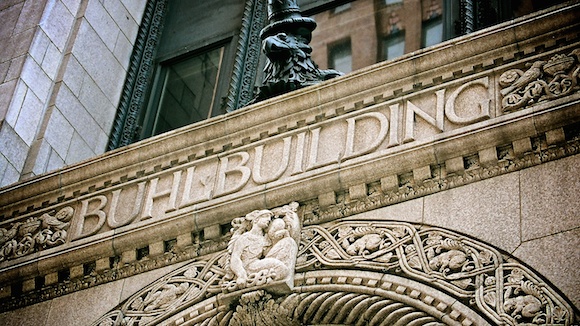
Completed in 1925, the Buhl Building was one of several collaborations between Parducci and architect Wirt C. Rowland. The Detroit Copper and Brass Works, which was owned by the Buhl family (then third-generation iron magnates), commissioned Rowland to design a new office building. Upon completion, the building was notable for its cross-like shape that allowed for extra corner offices and ensured that every office had a window. Clad in smooth, cream-colored terra-cotta and heavily ornamented by Parducci with elaborate Gothic and Romanesque details, the building exudes a certain heaviness befitting of its original owners, the iron magnates. Here we see the keystone above the main entrance featuring Mercury, the god of commerce.
3. Guardian Building, 500 Griswold
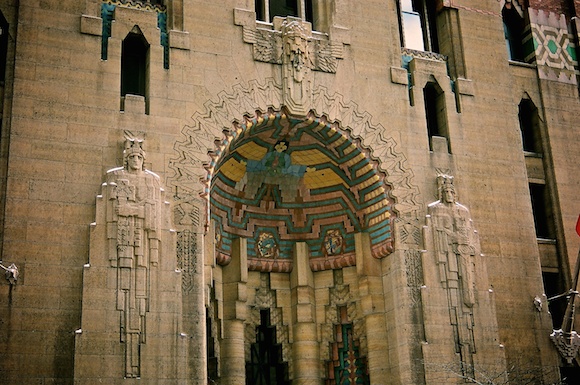
We now look across the street to the Guardian Building, Wirt C. Rowland’s Art Deco masterpiece that was completed in 1929 for the Union Trust Company. Influenced by Mayan, Aztec, and Native American motifs, the orange brick building is covered inside and out with colorful tile, glass, and metal – all hand-crafted by numerous artisans. Rowland once again worked with Parducci on this building. Parducci’s Native American bas-reliefs seen here represent safety and security. Safety holds a sword, Security holds a key, and both wear eagle head-pieces that all together symbolize the strength of American finance.
4. Bankers Trust Company Building, 205 W. Congress
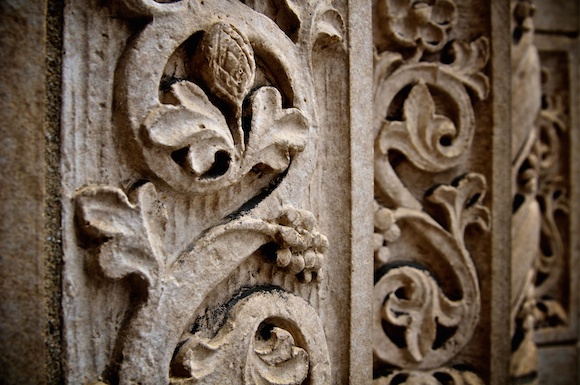
Yet another Wirt C. Rowland design, this small-for-its-neighborhood bank building was completed in 1925. The two-story, Romanesque-style building is clad in rose and beige terra cotta and heavily adorned with Parducci’s designs. This prickly stone thistle symbolizes protection, another common motif for 1920s bank buildings.
5. Greater Penobscot Building, 635 Griswold
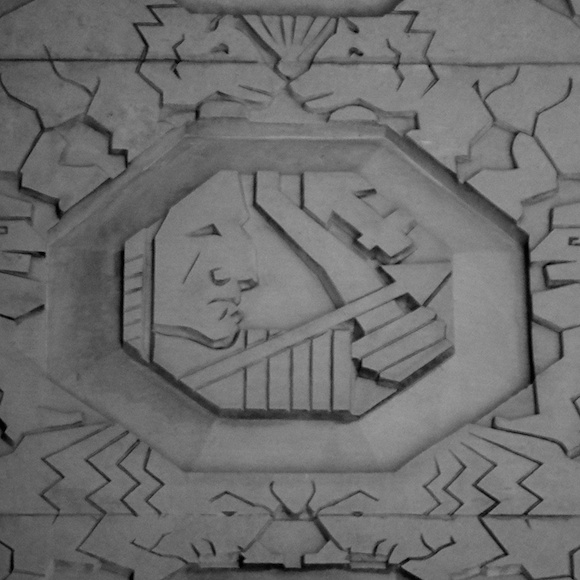
And another Rowland building, the 47-story Art Deco limestone tower that makes up one third of the Penobscot block was completed in 1928. The building’s ornamentation incorporates Native American motifs with figures wearing elaborate headdresses, eagles, and symbols representing sun worship. In this relief, Parducci gives us a scene in which a Native American hunts wolves and buffalo with a bow and arrow.
6. Security Trust Company Building, 735 Griswold
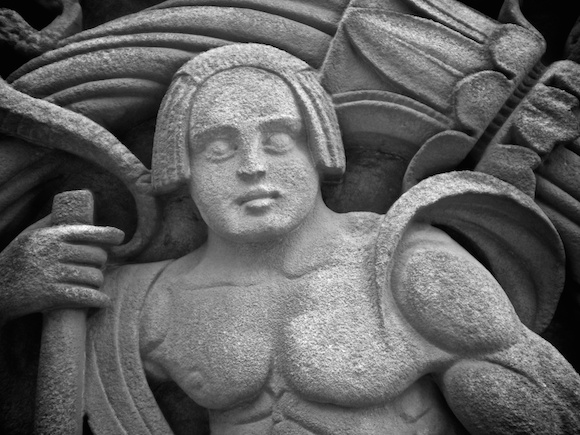
The Security Trust Company Building was designed by Albert Kahn in the Beaux Arts style and completed in 1925. The building is most recognizable by the massive four-story arches on its facade. Parducci continued the classical theme here with more animals and people on the columns, arches, door surround, and frieze. Here at the main entrance, we see a woodsman carrying an axe (partially cut out of the photo) and surrounded by various flora and fauna.
7. First State Bank, 751 Griswold
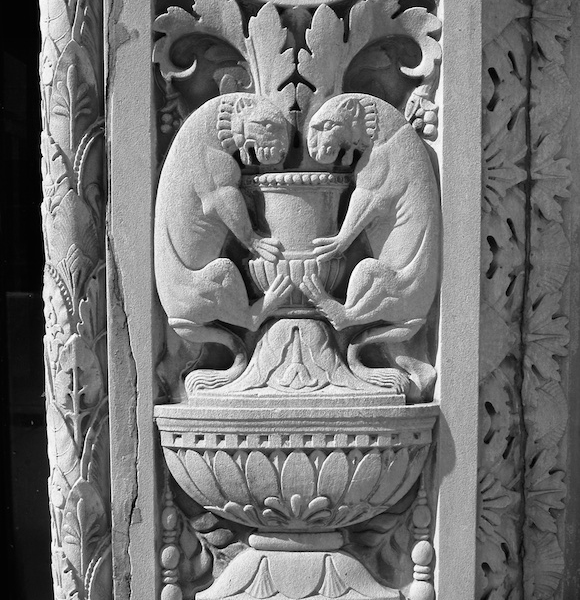
The same year, another Albert Kahn bank building was completed just next door. Parducci’s classical animals and foliage are seen on the door surround, on the plaques between each window and along the frieze and parapet at the roof. This closeup of the door surround shows two lions drinking from an urn.
8. Theodore J. Levin U.S. Courthouse, 231 W. Lafayette

Architects Branson V. Gambler and Robert O. Derrick designed this Art Deco courthouse building. Constructed in 1934, the exterior is smooth limestone on a black granite base. Parducci’s sculptures and medallions on the facade represent various government agencies and symbols. He also designed the bronze light screens shown here, recessed at the main entrance. The windows feature the Fasces, which symbolizes strength through unity, blind justice, and the Constitution, each flanked by olive branches.
9. St. Aloysius, 1234 Washington Blvd.
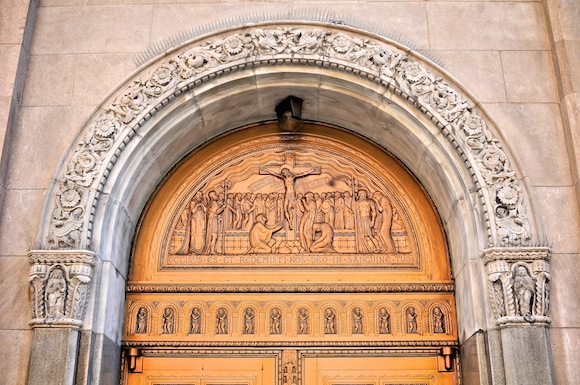
St. Aloysius was designed by Donaldson & Meier and completed in 1930. Parducci’s work gives life to the Romanesque-inspired building’s facade. The arches, arcades, column capitals, cornice, statues, rose window, and metal doors are all his craftsmanship. Here, one of two secondary entrances on the facade features an elaborate arch covered in foliage with a sphinx on either end. The panel above the door shows a crucifixion scene, under which an inscription reads, “Thou Wast Slain, And Hast Redeemed Us To God In Thy Blood”. Read more about these panels over at Historic Detroit.
10. David Stott Building, 1150 Griswold

The architectural firm Donaldson & Meier completed the Stott Building in 1929. The dramatic red brick tower sits atop a rainbow granite and limestone base, made all the more dynamic by Parducci’s work at the main entrance and elevator lobby. Here we see typical Art Deco motifs – chevron, geometric shapes, vegetation, roped columns – paired with the shields in the middle.
11. Detroit Public Library, Skillman Branch, 121 Gratiot Ave.

This Classical Revival-inspired building by William Kapp of the firm Smith, Hinchman and Grylls was completed in 1932. A modern take on the Classical Revival style, we see smooth limestone paired with various Greek motifs. This window sill relief of a classical man reading quite overtly symbolizes the quest for knowledge.
12. Music Hall, 350 Madison St.
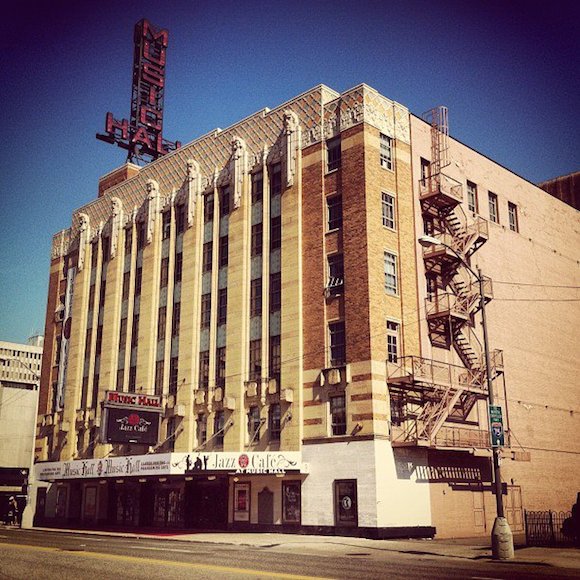
Another William Kapp building, this Art Deco theater was completed in 1928 for Matilda Dodge Wilson, widow to John Dodge. The facade is covered in terra cotta and tile. Look up to see Parducci sculptures representing tragedy and comedy.
(P.S. For a jaw-dropping example of Parducci’s residential work, pay a visit to Meadowbrook, Matilda’s mansion estate)
Interested in knowing more about Parducci and his work? Stop by Zenith on March 18th, where the Parducci Society is hosting a celebration of his 118th birthday.
All photos by Jack P. Johnson. Jennifer Baross contributed to this story.
Corrado Parducci in Downtown Detroit

